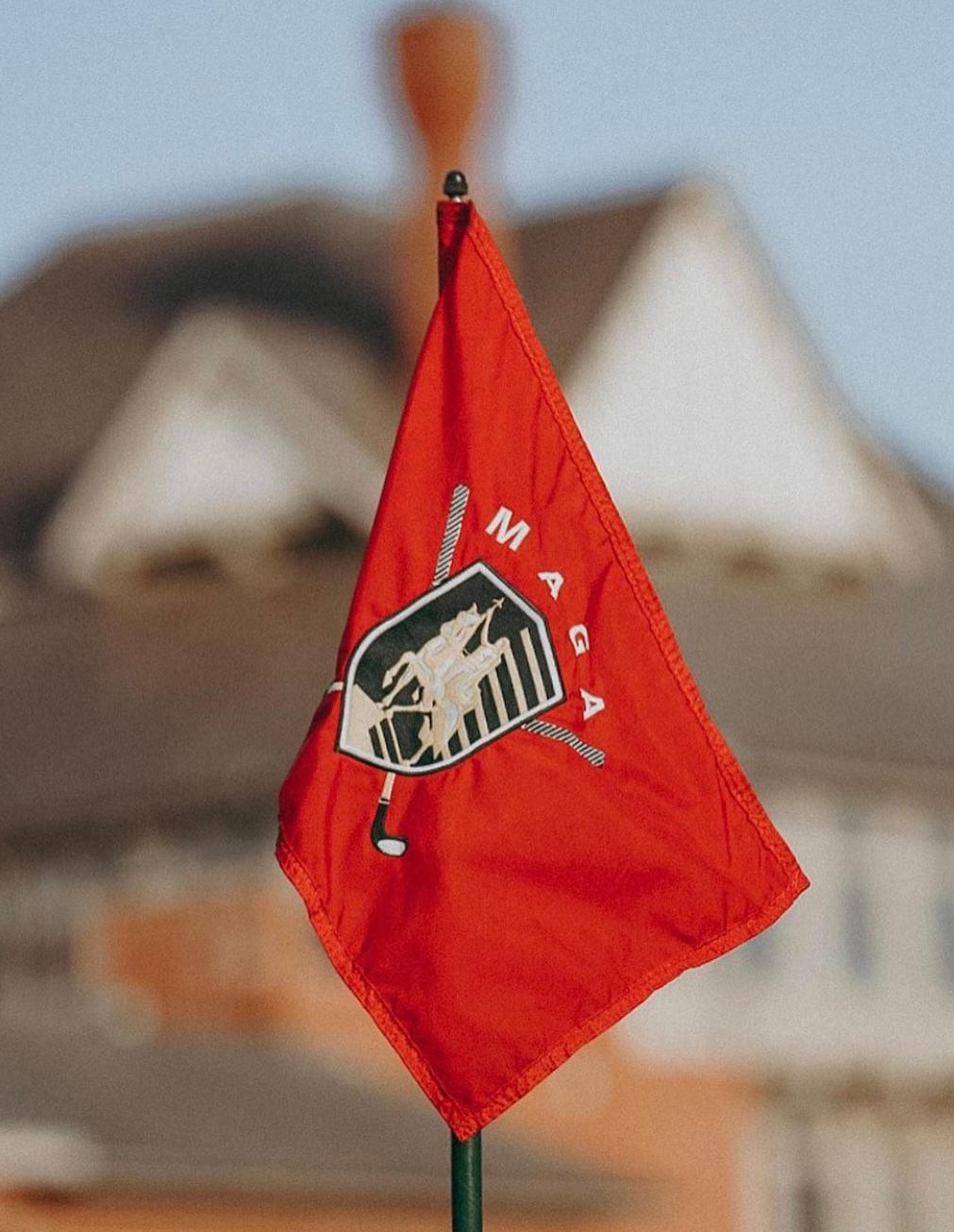The Metrop







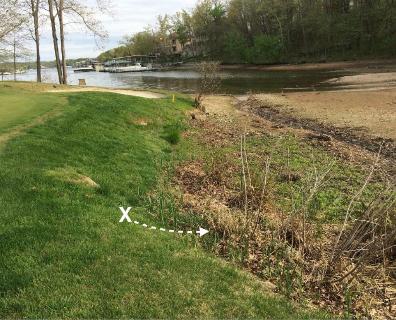

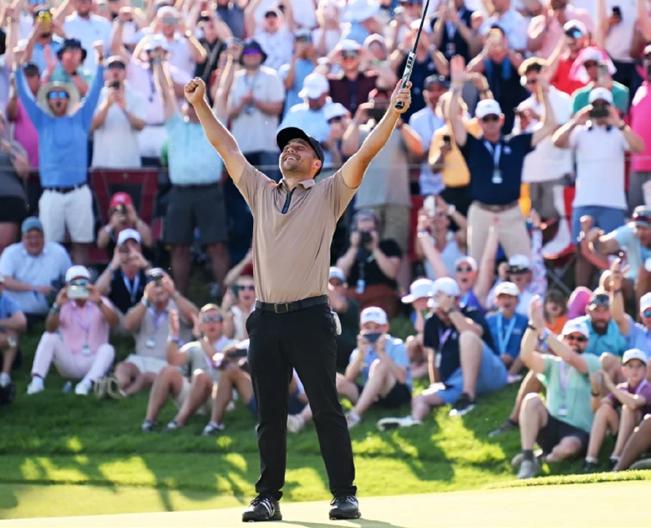
An Allied Golf Association of the USGA providing a variety of golf services to clubs and golfers in the Metropolitan St. Louis, Central, and Southern Illinois region.
WHAT WE DO:
- Provide GHIN Handicap Service to 140+ Member Clubs under the World Handicap System
- Provide the USGA Course/Slope Rating service to our Member Clubs
- Regional authority on the Rules of Golf and Amateur Status
- Conduct twelve (12) Metropolitan Championships each season
- Conduct USGA Qualifying for eight (8) USGA Championships each season
- Conduct three (3) Championships in Illinois
- Conduct the Amateur Series of Events for golfers of all ages and abilities

Amateur Championship
Open Championship
Women’s
Junior
Senior
Four-Ball Championship
9-Hole Championship
East
Normandie
Shogren
Sobbe
Mid-America
Amateur Series
Southern Illinois Amateur
SIGA Championship Tony
USGA

EXECUTIVE DIRECTOR
C
urt Rohe - curt@metga.org
DIRECTOR, MARKETING & COMMUNICATIONS
Caroline Buchan - caroline@metga.org
2024 PJ BOATWRIGHT INTERNS
Will Coleman
Jason Denham
Brennan Strubberg
EXECUTIVE BOARD
Officers
Scott Engelbrecht, President/Treasurer
Mike Marquart, Secretary
At Large Members
John Bugh
Stan Grossman
Kelli Kirchoff
Mike Marquart
Rick Meyer, Jr
John Moore
Mick Wellington
ADVISORY COMMITTEE
Scott Thomas, Chairman
Tom Barry
Skip Berkmeyer
Chris Kovach
Ryan Eckelcamp
Tom Portner
Curt Rohe
THE METROPOLITAN CONTRIBUTING WRITERS
Dan O’Neill
MVGCSAA
Dr. Zach Cutler
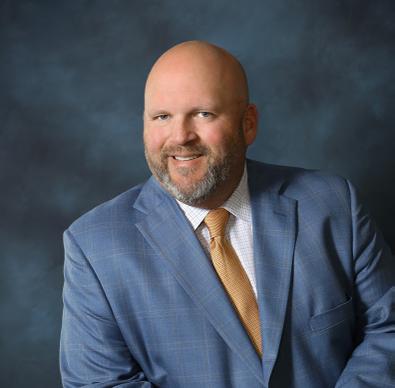
Good day golfers! I believe the saying goes “April showers bring May flowers”...well May showers brought headaches and frustration for us in golf administration. Yes, we got everything in, mostly ontime, but not without consternation and tribulation from Mother Nature this past month. I feel for the superintendents that spend the hours preparing the courses for us to conduct championships and qualifying rounds just to have a downpour set them back.
So, May has come and gone...it was a long year this past month! We kicked things off with the Old Warson Cup which was won by Chris Kovach in an emotional scene with his dad as his caddie and his young son alongside...it was very cool to see someone who had played in numerous Old Warson Cups get it done and add their name to that coveted trophy. Two USGA qualifiers followed, US Open at Westwood and US Women’s Open at Sunset. Another good story out of Westwood was their Assistant pro Devon Liberty making it through the Local stage of the US Open. What made this story so neat was the 25+ members following Devon around the course for his round and cheering him on the whole way! Good luck to Devon on the Longest Day in Golf June 3 for Final Qualifying!
The US Women’s Open qualifier was just flat out a struggle with Mother Nature dumping 8 inches of rain the 7 days prior. What was a 36-hole qualifier on one day, turned into a 2-day qualifier because of the rain and weather delays on day 1. I cannot say enough about the cooperation by Sunset CC in ensuring we were going to get the 36-holes in as timely as we possibly could. Adjust their members around to make sure we got this done, so thank you!
With May also comes the start of our interns...and that is always a welcome sight for the Association. Jason, Brennan and Will got thrown into the fire right away and have quickly adapted into the season. Jasona and Will enjoyed the trip to the USGA in Liberty Corner, NJ for the Boatwright Summit along with many other interns from AGA’s around the country. This was a great memory I had 26 years ago making that same trip to the USGA with fellow interns and so glad the USGA continues this program for the AGA’s.
Lastly, May kicks off our monthly edition of The Metropolitan! Thank you for taking a moment to read our newsletter. Keep it in the fairway!
24
- The number of hours a golfer was given to live by his doctor during a recent visit. The story goes like this: After playing in the Shogren Cup, an amateur golfer began feeling poorly and paid a visit to his doctor. The physician conducted a thorough examination, then delivered his prognosis:
“I’ve got some good news and some bad news,” he started. The concerned golfer said, “OK, well give me the good news first.”
“You’re seriously ill,” the doctor replied, “and you have just 24 hours to live.”
The player was devastated: “I have 24 hours to live? My God, how can that be? I mean, if that’s the good news, what could possibly be the bad news?”
The doctor shot back: “I forgot to call you yesterday,”
4
- The number of U.S. Opens awarded to Pinehurst No. 2 over the last 25 years. It marks the first time in over a century the USGA has conducted as many of its national championships at one site, and comes on the 25th anniversary of Payne Stewart’s dramatic U.S. Open win in 1999 at Pinehurst. Stewart’s 15-foot par putt on the 72nd hole beat Phil Mickelson by a stroke. Stewart would not have the opportunity to repeat the title, as the three time major championship winner died in a tragic aviation accident just four months after his championship at Pinehurst.
1
- This is how many of the 68 players to make the cut at Pinehurst in ’99 finished under par. One other - Mickelson - finished even. In contrast, of the 78 players who made the cut last month in the PGA Championship at Valhalla Golf Club, 74 finished under par. The cut was 1-under at Valhalla; 7-over at Pinehurst. When four days of bird watching was over at Valhalla, the red coated field finished a collective of 214-under par.
3
- Between 1457 and 1744, the Scottish government officially banned the sport of golf three times. The Scots felt that golf interfered with military training, which was serious business at the time. Thus, the playing of the sport was prohibited to ensure soldiers were preparing for war. Moreover, golf was not the only sport banned during this time. The Scottish government also prohibited football (aka soccer) for the same reasons.
15
- How many years it’s been since Alexis “Lexi” Thompson competed in the 2009 U.S. Women’s Amateur at Old Warson Country Club. Thompson, then a 14-year old phenom, made it as far as the semifinals at OWCC before losing to Jennifer Johnson. Late last month, the 29-year old Thompson announced she will retire from professional golf at the end of the 2024 schedule. Thompson became an 11-time LPGA Tour winner, a major champion, a two-time Olympian and earned over $14 million. That said, she hasn’t had a victory on the LPGA Tour since June 2019 and cited mental health issues for stepping away. Interestingly, Johnson, now 32, has one LPGA victory to her credit. Jennifer Song, 34, who defeated Johnson in the finals to win the ’09 Women’s Amateur, has yet to win an LPGA event.
1971
- The year John Hudson, a 25 year old club professional at the time, holed two consecutive holes-inone on the 11th (195 years) and 12th (311 yards) holes in the second round of the Martini Tournament at Norwich, England. Hudson used a 4-iron to get the first ace, then dunked his driver on the 12th, a downhill par-4. The feat is believed to be the only time a player has scored consecutive holes-in-one during a professional tournament. By the way, Hudson finished ninth at the Martini. He later played on the European Seniors Tour before becoming the head professional at Rivenhall Oaks Golf Centre in Witham Essex, England.

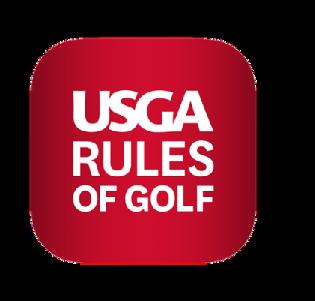

After two days of competition, we were ready to crown another Old Warson Cup Champion. With both defending champions knocked out of the competition on Saturday, this meant there would not be a repeat winner, but there were still two former champions in the field that could add to their tally. The semi-finalists and senior finalists knew that today would bring some stiff competition, especially when they saw who they would be up against. Only one quarterfinal match was unable to complete its round due to darkness on Saturday, so the two playersKovach and Kelly - returned to finish their match early on Sunday. Kovach would win the match 3 & 1 to round out the semi-final field. Once this was determined, we turned our attention to the semi-final matches, which began at 7:20am.
The first semi-final match was between two multi-cup champions. The number one seed, two-time champion, Justin Bryant of St. Louis Country Club was faced with three-time champion, number thirteen seed, Sam Migdal of Norwood Hills Country Club. With these decorated players, this was sure to be a battle to the finish. Migdal looked strong early in the match. By the end of the seventh hole, Migdal had a three-up lead over Bryant. This did not deter him though, as Bryant turned a page and won the next three holes to bring the match back to square. Migdal then found a second wind to get back to two-up through 13, but once again, Bryant rallied back. Bryant would win the last three holes to win the match 1 Up and take his place in the Final.
The second semi-final match saw number three seed, Ryan Eckelkamp of Franklin County Country Club, and number ten seed, Chris Kovach of Old Hickory Golf Club, face off. Kovach had to complete his quarterfinal match moments before this match started, and Eckelkamp played 36 holes yesterday to earn his spot in the semi-final. In a true battle, Eckelkamp started the round by winning the first hole, but Kovach struck back by winning the second hole. By the fifth hole, Kovach had a 2 Up lead. Eckelkamp is a fighter and had tied the match back up after hole seven. Through nine holes, we were at a standstill. Kovach then won the tenth hole and kept that one-up lead until the seventeenth hole when Eckelkamp evened the score. The match went into an extra hole, where Kovach would win and claim the final spot in the Final Match.
The Senior Final Match kicked off at 11:45am between first time competitor, Brian Hall of Persimmon Woods Golf Club, and inaugural senior champion, Buddy Allen of the Metropolitan eClub. The pair took off and remained tied until the fourth hole when Hall took the lead. Hall maintained control of the match for its entirety, going two-up on hole seven and not giving away many shots. Allen tried to fight back and did win Hole 10, but Hall would not let the match go to all square. Winning Hole 15 and 16, Hall put the match in the bag to win 3 & 2. This made Brian Hall the 2024 Senior Old Warson Cup Champion.
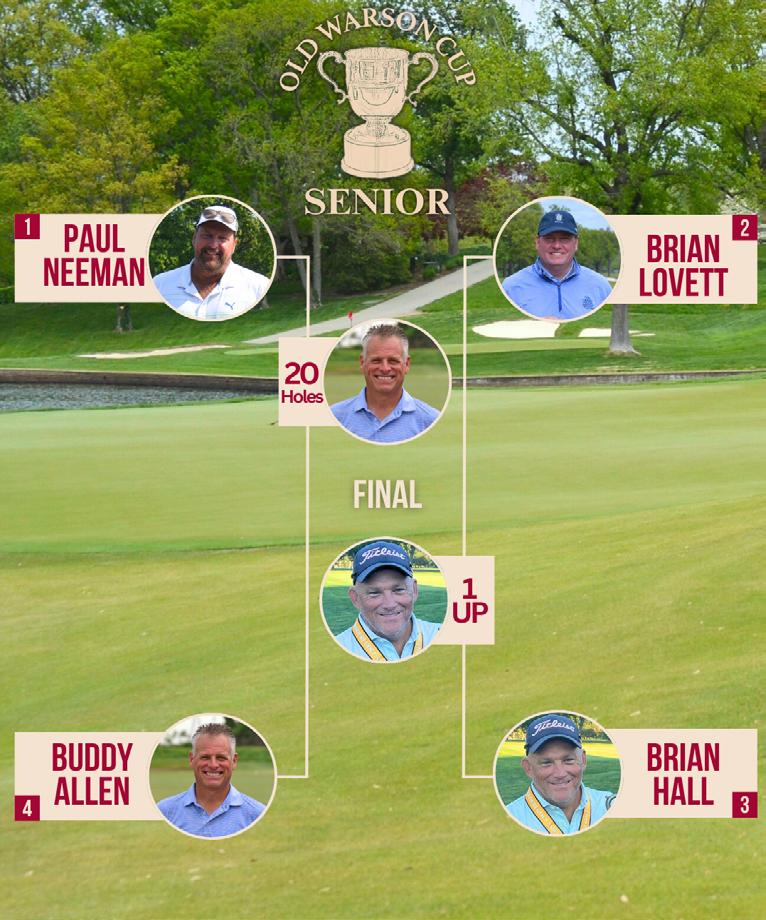
The Final Match featured Justin Bryant (No. 1) and Chris Kovach (No. 10). Both players worked hard to get to this point. Kovach played 18 holes, 17 holes, and then 19 holes to earn his spot, while Bryant played all 18 holes in each round to earn his place. The pair are tough competitors and have proven they have what it takes to win. Bryant is a former champion and Kovach is looking for his first win here. This match stayed
tightly contested from start to finish. It wasn’t until the third hole that Kovach took the lead. On the seventh, he extended that lead to two-up. With Bryant unable to find a win on the front nine, he knew he would need to try a back nine blitz like he had earlier in the day. Bryant successfully won the tenth hole to bring the match back within one. Then it was a back and forth fight between the pair for the next sixteen holes. Kovach got back to two-up over Bryant on Hole 12, but that was mitigated when Bryant drove the green on Hole 14 and then won the hole. A near hole-out from the bunker by Bryant at the fifteenth almost tied the match back up. Knowing who he was up against, Kovach kept moving forward and managed to win the sixteenth to get back to two-up. The match continued to Hole 17 and this is where it came to rest. Kovach made par to tie the hole and win the match. Bryant would fall to be runner-up for a second year in a row, while winning 2 & 1, Chris Kovach became the 26th Old Warson Cup Champion.
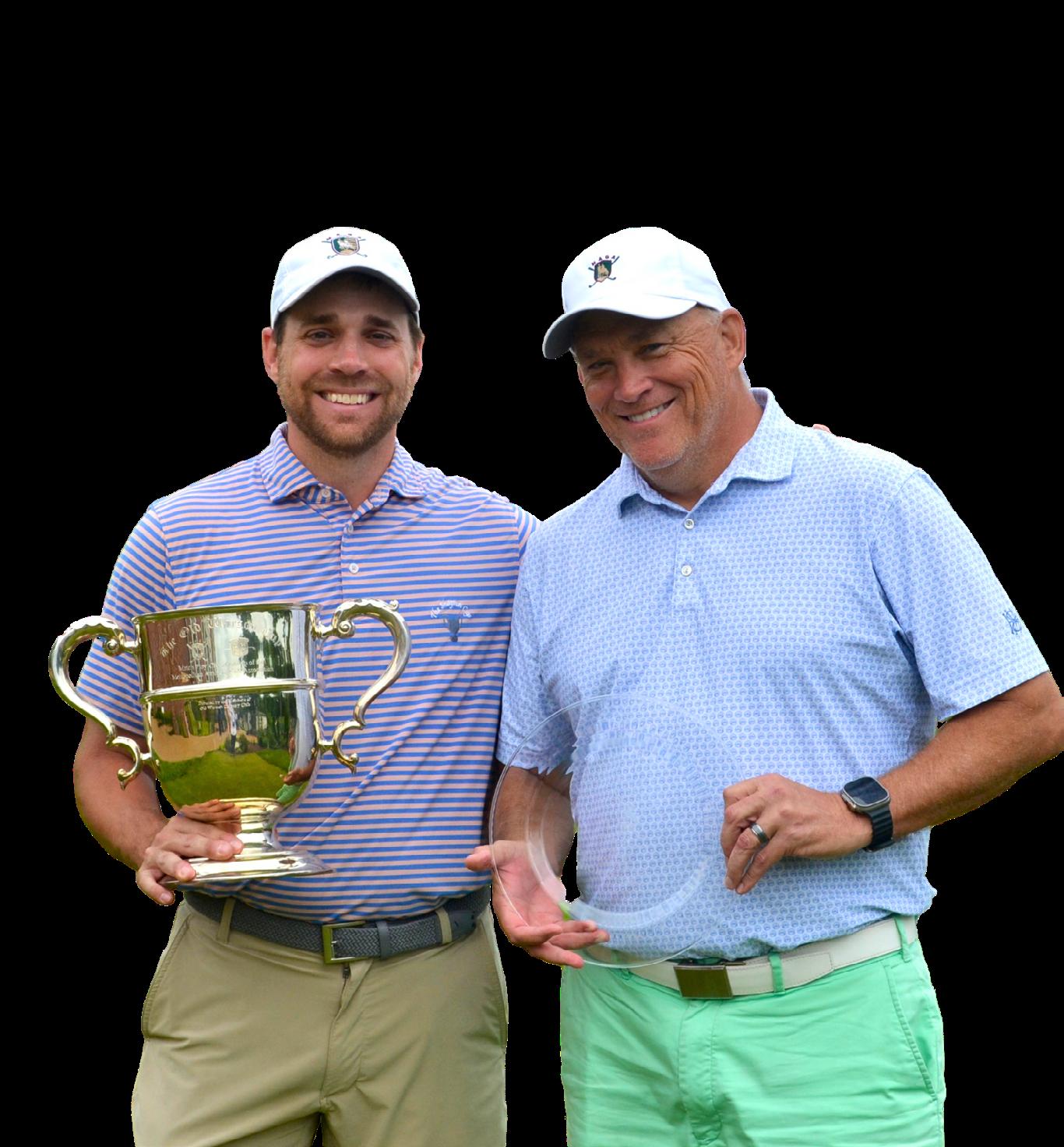
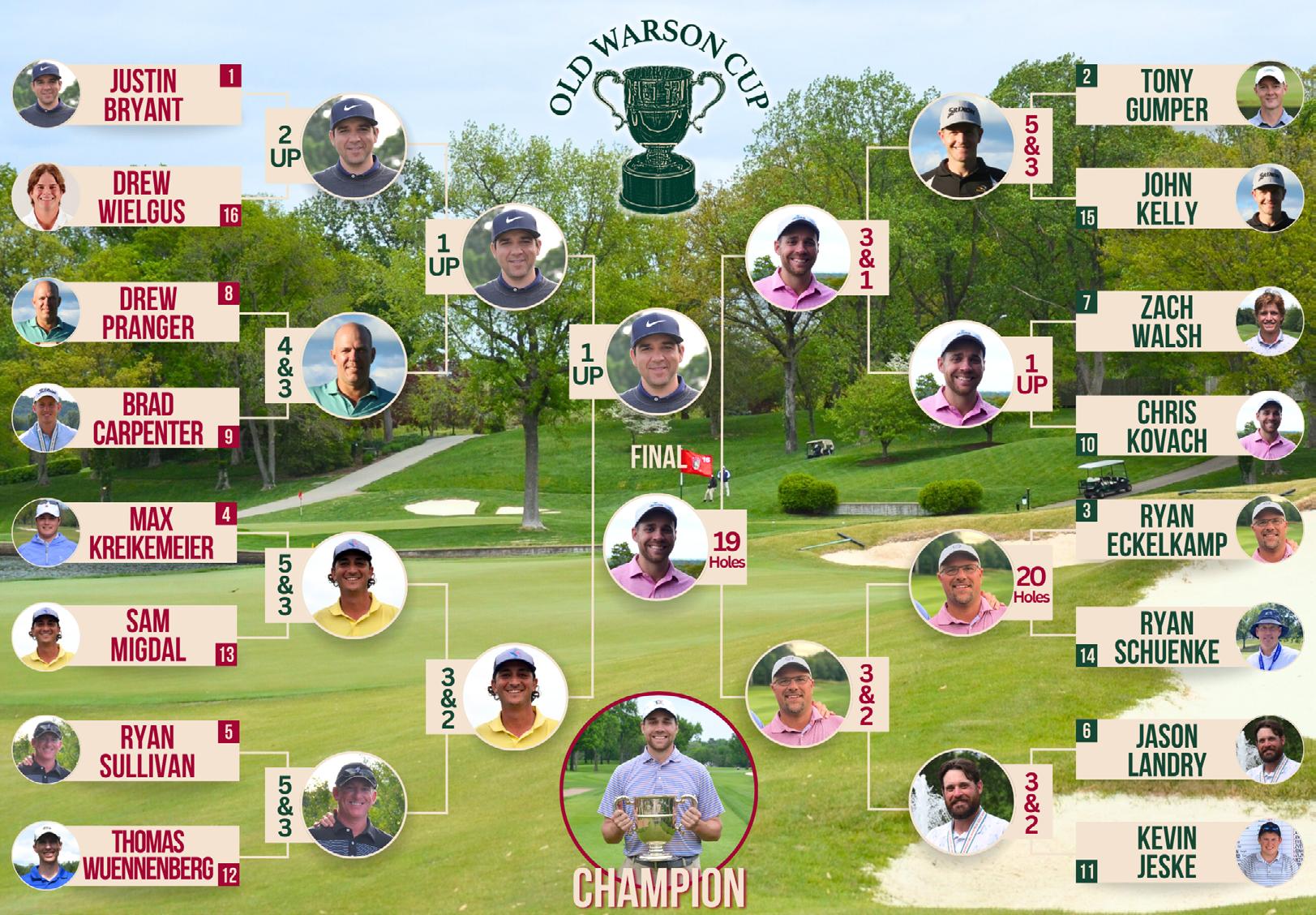
This win for Kovach comes after years of competing in this championship and not being able to break through into the Sunday pairings. In a post-round speech, Kovach mentioned how Old Warson has been a place of success in the past during his golf career, and how this is such a sweet victory to find success here again. We gained two new names for the championship records this year, and the joy of the victory is imminent in the smiles on their faces. Brian Hall becomes the third champion in the Senior Old Warson Cup, and Chris Kovach becomes the sixteenth new name to be added to the Old Warson Cup trophy after the 26th playing of the championship.
For the fourth time, the Metropolitan Amateur Golf Association amateur golfers met with the Gateway PGA professionals to battle for the Robert A. Shogren Cup. In previous meetings, the professionals have won once and the amateurs have won twice. The amateurs arrived at Greenbriar Hills Country Club ready to defend and bring home the trophy for a third year in a row. Over the course of the two days, all players of the 14 person teams participated in a four-ball, foursome, and singles match.
Team Metropolitan: Buddy Allen, David Bremer, Corey Choate, Ryan Eckelkamp, Tony Gumper, Chris Kovach, Max Kreikemeier, Tyler Linenbroker, Brian Lovett, Paul Neeman, Drew Pranger, Ryan Sullivan, Zach Walsh, and Jason White
Team Gateway PGA: Adam Betz, Shane Blankenship, Jeff Field, Bob Gaus, Matt Gindler, Steve Hausmann, Sam Lee, Brett Moomey, Bobby Pavelonis, Ryan Roy, Blake Sharamitaro, Gideon Smith, Mike Tucker, and Jeff Whitfield
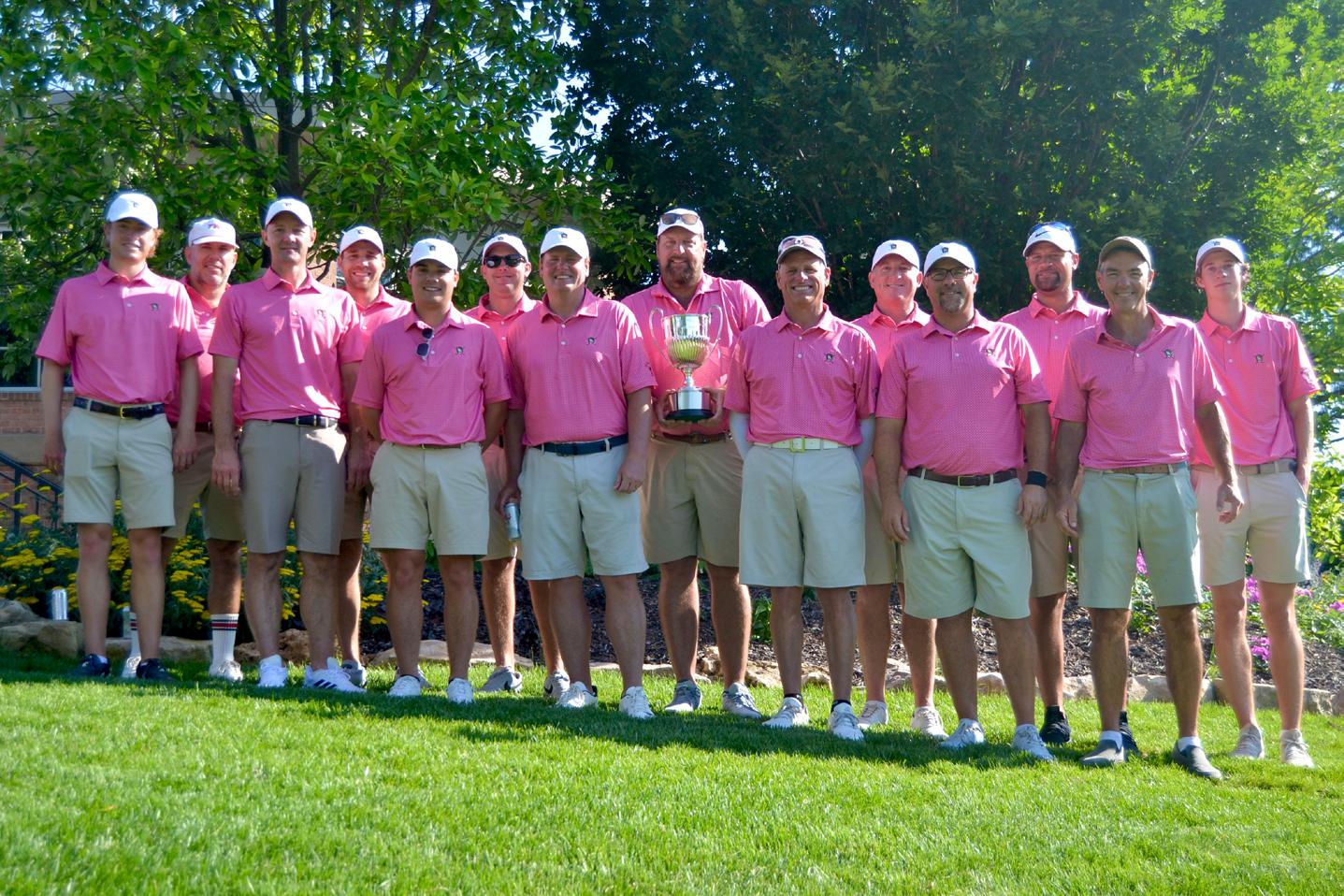
Kicking things off on Sunday afternoon were the four-ball matches. The seven matches were tightly contested throughout their duration. In the first match, Zach Walsh and Tyler Linenbroker put together a strong front against Brett Moomey and Matt Gindler. Never giving up the lead, Linenbroker and Walsh won their match 2 & 1. Next up was Jason White and Corey Choate versus Ryan Roy and Bobby Pavelonis. White and Choate also never gave up the lead - despite Gateway’s efforts - to win 2 & 1. Buddy Allen and David Bremer faced Mike Tucker and Steve Hausmann in the third match of the day. Allen and Bremer took the first lead of the match, but fell to Tucker and Hausmann 3 & 2. The fourth match saw Ryan Sullivan and Chris Kovach against Sam Lee and Gideon Smith. Though almost making a comeback twice in the match, Kovach and Sullivan would end up losing 2 & 1. Drew Pranger and Max Kreikemeier teamed up to take on Jeff Field and Shane Blankenship. It took six holes to find a lead, but Kreikemeier and Pranger moved ahead and kept going until they won 2 & 1. Brian Lovett and Paul Neeman fought Bob Gaus and Jeff Whitfield until the end. Bringing it back into green territory after being down, Lovett and Neeman tried to stay up, but would end up falling to Gaus and Whitfield 3 & 1. In the final match of the day, Tony Gumper and Ryan Eckelkamp faced Blake Sharamitaro and Adam Betz. After losing the first hole, Gumper and Eckelkamp fought in a back-and-forth match until they won 2 & 1. At the end of the day, Team Metropolitan had banked four points, while Team Gateway banked three points.

Coming back Monday morning, players regrouped for the foursome (alternate shot) matches. Sullivan and Choate went out first against Lee and Gindler. It was a successful match for Gateway, as Sullivan and Choate were unable to catch a lead and would fall 4 & 2. Back together again were Linenbroker and Walsh, now facing Field and Hausmann. Field and Hausmann would win the first hole before Walsh and Linenbroker came back to take over in dominance to win 5 & 4. Third out were duo Gumper and Eckelkamp, against Smith and Roy. Once again Gumper and Eckelkamp found themselves in a back-and-forth match, but would come out triumphant on eighteen 2 Up. In the mid-way match, Kovach and White faced Moomey and Blankenship, which was another battle to the last. Kovach and White found a strength on the back nine to win 2 Up. Bremer and Neeman went out to face Whitfield and Gaus. Unable to find a lead, Neeman and Bremer would lose the match 3 & 2. Allen and Lovett teamed up to take on Tucker and Pavelonis. Lovett and Allen were down after the first, but would come back to never let go of the lead and win the match 3 & 1. Pranger and Kreikemeier were back together again in a battle against Betz and Sharamitaro. It was a fight, but Pranger and Kreikemeier would win 2 & 1. In the foursomes, Team Metropolitan added five points to their tally and Team Gateway added two points. This brought the totals to nine points for Team Metropolitan and five points for Team Gateway. After a lunch refuel and quick warm-up, players were back out in the singles
matches. Fourteen points were up for grabs, so anyone could still win it. Matches started the round as soon as they had had time to eat and quickly prepare for the afternoon. Going out first was Linenbroker versus Field. Field would start out with the lead, but Linenbroker would make a comeback three times to get the match to the eighteenth, where he would win 1 Up. Next, Captain Tony Gumper would take on Steve Hausmann. After a battle and being three up at one point, Gumper would win on 18 green, 1 Up. In the third match, Corey Choate set out against Gideon Smith. Choate would press ahead to win this match 4 & 3. Behind them were Jason White and Ryan Roy. White would take the early lead and never give it up to win 3 & 2. Still looking for a Shogren Cup win, Paul Neeman faced Bob Gaus. Neeman would get to three up on the front nine, but Gaus fought back and the pair would end Tied on the eighteenth green. The sixth pair to go out were Chris Kovach and Matt Gindler. Kovach would be the first to have a lead in the match, but Gindler came back and defeated Kovach 3 & 1. Zach Walsh and Shane Blankenship went off at the halfway mark in the seventh match. Walsh won the first three holes, but Blankenship made a comeback to find a lead. Walsh took the match to eighteen, where he would win the hole and end the match Tied.
Ryan Sullivan and Brett Moomey started out the second half of singles matches. Sullivan had dominant control of the match from beginning to end and would win 4 & 3. Following behind them were Max Kreikemeier and Sam Lee. Lee would have the early lead, but Kreikemeier got the match back on his side. The pair continued to battle and would finish Tied. In the tenth match of the round, Brian Lovett took on Jeff Whitfield. Lovett had the first lead and the pair would be evenly matched until the back nine. Lovett ended up losing the match on the back 3 & 2. Ryan Eckelkamp and Blake Sharamitaro had a clash around the course. Eckelkamp took a stand on the back nine to win the match 2 Up. Buddy Allen had to take on Mike Tucker in the twelfth match. It was a tough round for Allen, as he could not catch a break and would end the match down to Tucker 4 & 2. David Bremer and Bobby Pavelonis set out to each get their side a point. Bremer had the early lead until Pavelonis made a comeback. Bremer tied the match up on Hole 12 and the pair would end the match Tied. The final match of the day was between Drew Pranger and Adam Betz. Pranger dominated the front nine, and then it flipped with Betz dominating on the back nine. Pranger was five up on the front, but Betz’s comeback left the match to end Tied. At the end of this round, Team Metropolitan had earned another 8.5 points and Team Gateway had earned 5.5 points.
At the end of the second day, the totals came to Team Metropolitan with 17.5 points and Team Gateway with 10.5 points. The amateurs would take the win for the third year in a row over the professionals.



After two wet days at the Country Club of St. Albans, we finally got a beautiful day of sunny skies for the Final Round of the 19th Metropolitan Open Championship. The field started out with 148 players representing 29 different states. At the conclusion of the second round, the field was cut to the low 40 and ties, which resulted in 40 players making the cut at one-under (-1) par. Ryan Cole came into the Final Round with a five stroke lead at thirteen-under (-13) par. Will Grimmer was in second at eight-under (-8) par, and Wesley Hunter and Matt Echelmeier were tied for third at seven-under (-7) par. By the end of the day, one player would hoist the trophy and receive a payout of $25,000. Play began at 7:15am with the final pairing starting their day at 8:45am on Hole 1.
It was another eventful day on the course with 24 rounds under par, and the win coming down to the very last putt. Dylan Meyer of Evansville, IN brought in a score of five-under (-5) par to move up the leaderboard today. With six birdies on the day, Meyer doubled his score to finish the tournament in solo fourth at ten-under (-10) par. Will Grimmer of Cincinnati, OH put together a third round under par to get to eleven-under (-11) par for the tournament. This put Grimmer in solo third at the conclusion of the day. David Perkins of East Peoria, IL came out firing today to put the pressure on the leaders. Perkins started the day at six-under (-6) par, seven strokes off the lead. Ready to make a run for it, Perkins birdied the first three holes and then made five more birdies across the round. This seven-under (-7) final round pushed him into solo second at thirteen-under (-13) par.
Perkins was definitely putting the heat behind Cole all day. Ryan Cole of Midlothian, VA was the leader throughout the championship. Coming in with a five-stroke lead, it seemed as though all Cole would need to do is continue his streak of great play to bag the win. As the day went on, Cole made it through seven holes without a single birdie by parring every hole. On Hole 8, he finally found that first birdie and hoped this would be the turning point for the round. Cole would continue on to not make another birdie until Hole 14, but this would get negated by a bogey on Hole 15. At this point Perkins was hot on his trail, sitting just a stroke or two back. A birdie on Hole 17 for Perkins meant that Cole would have no room for error on the last two holes. Perkins finished his round and had to anxiously wait by the 18th green to see if Cole could hold on to his one-shot lead. Cole made his way up 18 as a
small gallery began to form around the green. He stuffed his shot from the fairway in close enough that he was looking at a putt for birdie. Hitting his putt with just the right speed, it narrowly missed falling in and he would end the day with a yet another par. Cole was disappointed in his putting for the day, but it was still good enough to finish the round at one-under (-1) par. This would secure the victory for Cole at fourteen-under (-14) par.
Only three local amateurs made the cut this year. John Bubba Chapman of St. Louis started the day at one-under par and would have an up-and-down round to finish at one-over par. Tyler Linenbroker of Chesterfield, MO also started the day at one-under par and pulled out a final round of even par to stay at one-under (-1). Blake Skornia of St. Louis, MO began today at two-under par, but after a consecutive round of one-over, he finished at one-under (-1) par. Tied on the board, this gave Linenbroker and Skornia co-low amateur honors.
Cole was the runner-up in this championship last year and is glad to have won it this year. He finished last year with a final round of seven-under (-7) par and began this year with a first round of seven-under (-7) par. He picked back up right where he had left off a year ago. Over the course of the three days, Cole continued to mention that he loves this course, and it showed through the rounds he was able to produce. It was a long stretch of days, battling the weather and the conditions, but Cole was able to get the job done in an impressive fashion. Ryan Cole was finally able to lift the James S. Manion Trophy as the 19th Metropolitan Open Champion.
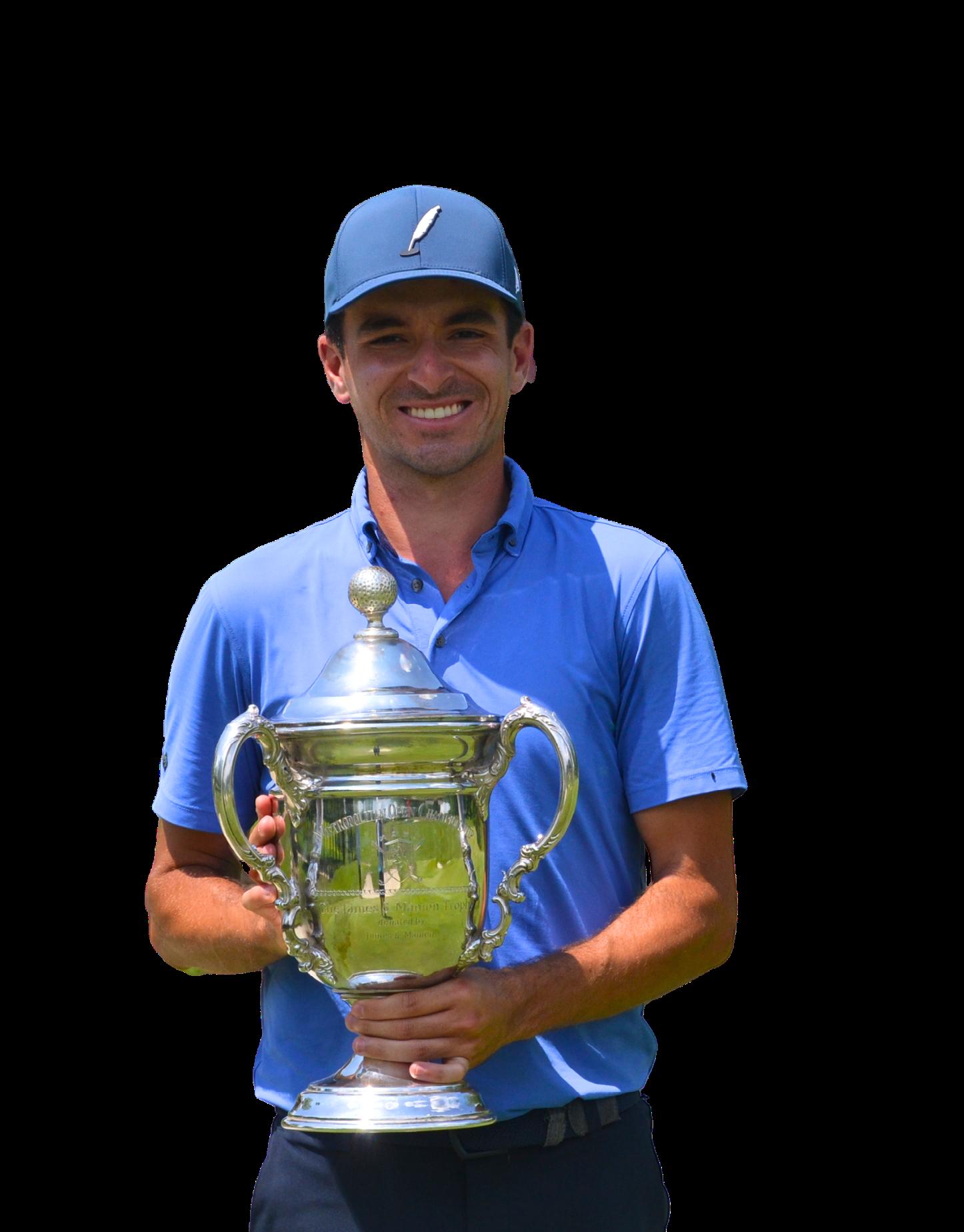
TylerLinenbroker& BlakeSkornia

It was another beautiful day at Gateway National Golf Links for the Final Day of the East Side Amateur. The temperature reached the low-80’s with a light breeze blowing throughout the day. Coming into today’s round, there was a tie in both the open and senior divisions. Joe Midgal and Blake Skornia were tied in the open division at three-under (-3) par, while Brian Hall and Paul Neeman were tied at even (E) par in the senior division. Once again the first group of the day teed off at 6:30am and the final group began at 12:10pm. Across the course of the two days, hole 15 played the hardest, while hole 6 played the easiest. There were six eagles, five of which were made in Round 2.
The Open Division turned into a nail biter, coming down to the very last putt of the day. Seven players that were even par or over yesterday, shot under par in today’s round. This moved them up the leaderboard and put the pressure on the guys at the top. The two lowest rounds of the day came from Sam Migdal of Norwood Hills Country Club and Adam Pfeiffer of Spring Lake Country Club, who shot 67 (-4). For S. Migdal this jumped him up the leaderboard to tied for ninth at two-over, but for Pfeiffer, this bogey-free round moved him to two-under (-2) par and into the mix. Pfeiffer was the first player to come into scoring with this score, and he would have to wait to see where those behind him fell. At that point, Ryan Sullivan of Tapawingo National Golf Club and first round leader, Blake Skornia of Algonquin Golf Club, were both sitting at two-under par as well. Sullivan was the next to finish his round, and he finished with a par on 18 to remain tied with Pfeiffer. In the last grouping of the day, Skornia was having an up-and-down round. He came into the eighteenth at two-under par and set himself up for birdie. Putting last out of his group, Skornia drilled one in to make the birdie and clench the title at three-under (-3) par.

In the Senior Division, things got tight on the leaderboard. There were times throughout the day where players would take a hold of the lead, but then would fall back into tied positions. Brian Lovett of Bellerive Country Club came into the clubhouse as the leader with a score of two-over (+2) par. Lovett was in
the next to last group of this division, so he had to wait for the final group to finish to see his fate. Right behind him was Paul Neeman of Persimmon Woods Golf Club, who sat just one stroke back. As Neeman made his way down 18, everyone watched to see if he could tie the lead, and that he did. With a birdie on Hole 18, Neeman pulled himself to two-over (+2) par and tied with Lovett. These two players have a history of playing each other, including Lovett beating Neeman in the 2023 Old Warson Cup Senior Final and Neeman winning the 2023 Metropolitan Senior Amateur Championship over Lovett, who was runner-up. The pair set off on a play-off of Hole 1, which was a rocky start for both players earlier in the day. In this playing of the hole, Lovett would make par to win the hole and the championship.
The hardware for the 2024 East Side Amateur would be going home with Blake Skornia at three-under (-3) par and Brian Lovett at two-over (+2) par plus a playoff hole.

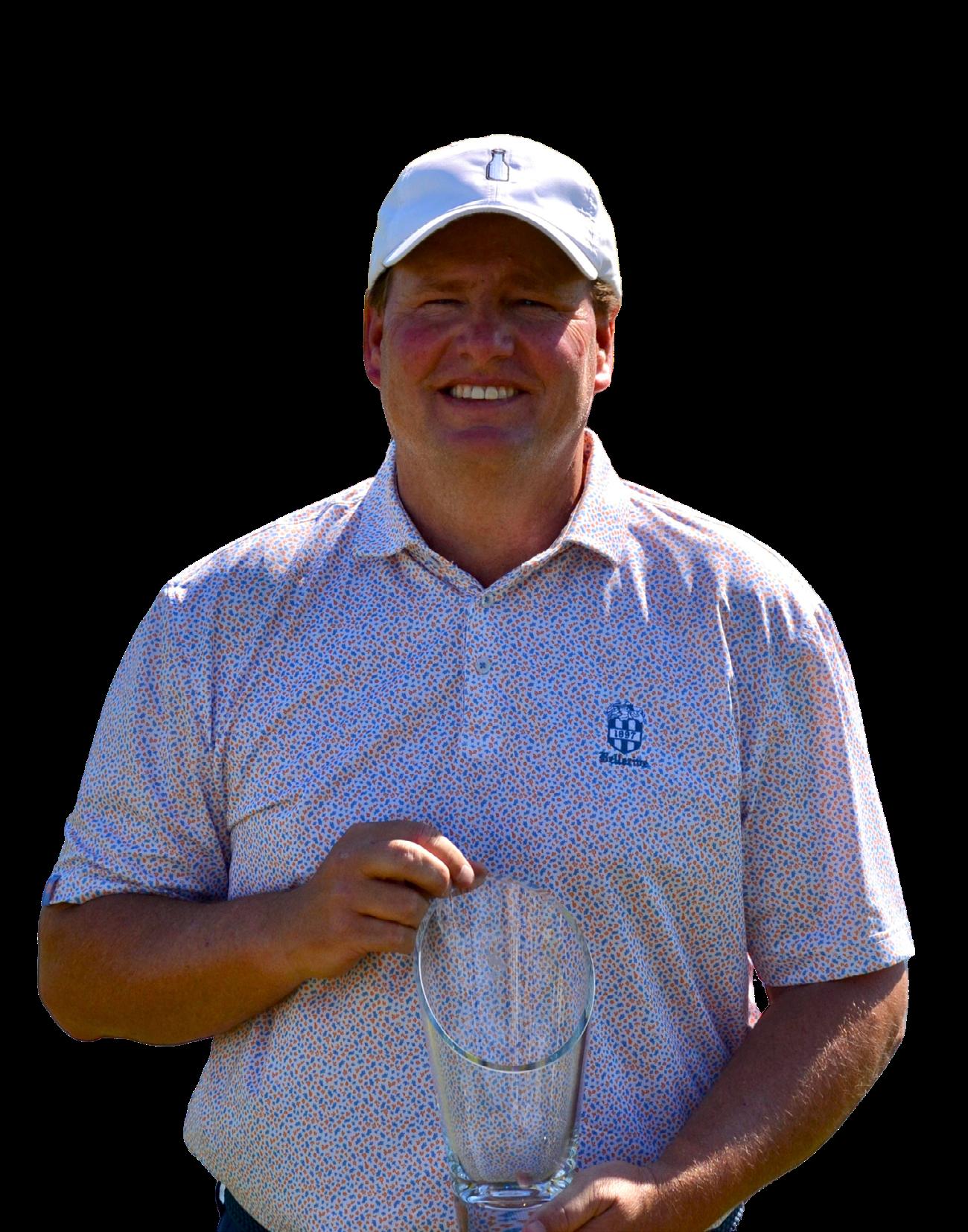


Two St. Louis Natives, Joe and Sam Migdal, competed in the U.S. Amateur Four-Ball Championship at Philadelphia Cricket Club. The brothers qualified back in September of 2023 at the St. Louis area Qualifier at Annbriar Golf Course. Together, they put up a good fight throughout the championship and represented our area well. We are proud of the Migdals on their success at this national championship this year!
The Jourey of the Migdals at the U.S. Amateur Four-Ball:
St. Louis Area Qualifier Result: shot -10 to finish in first as the Qualifying Medalists
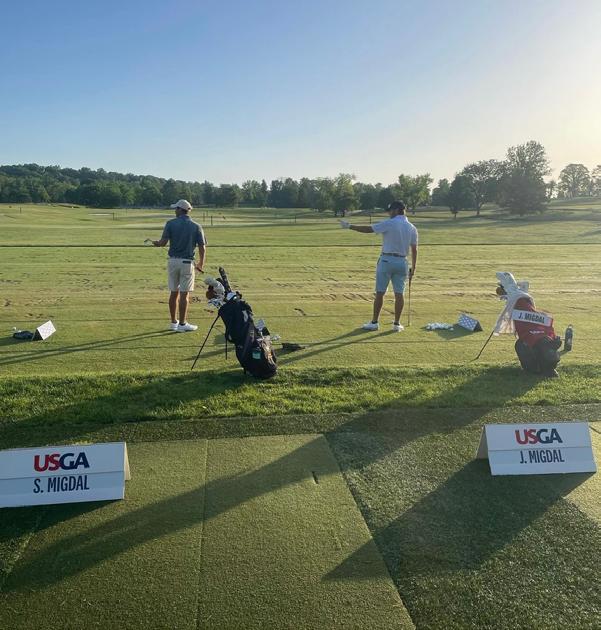
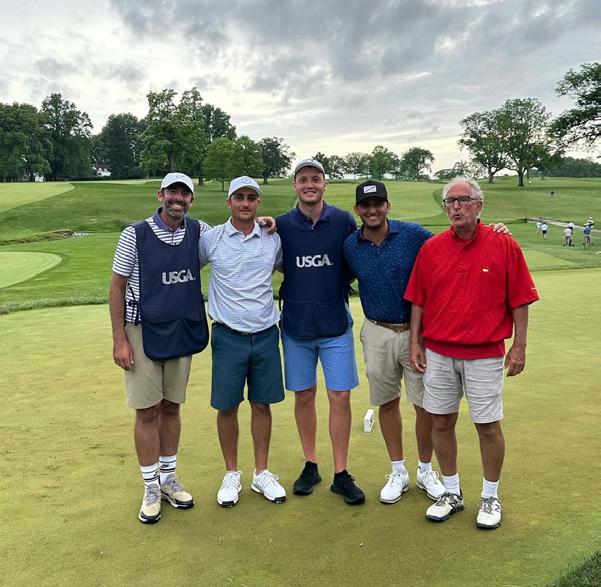
U.S. Amateur Four-Ball
Stroke Play
Round 1: T18 at -5
Round 2: T27 at -7


*Top 32 teams make it to stroke play and 11 teams were tied for the final 6 spots. A playoff would take place on the third day.
Playoff: Birdie on the 3rd playoff hole to claim the 29th seeded spot
Match Play
Round of 32: WON 2&1 versus No. 4 seed
Jack Cantlay and Jaden Huggins of California
Round of 16: Loss 6&5 versus No. 20 seed
Will Davenport and Mike Smith of Florida
*Out of 10 brother tandems, Sam & Joe were the only brothers to survive to the Round of 16.
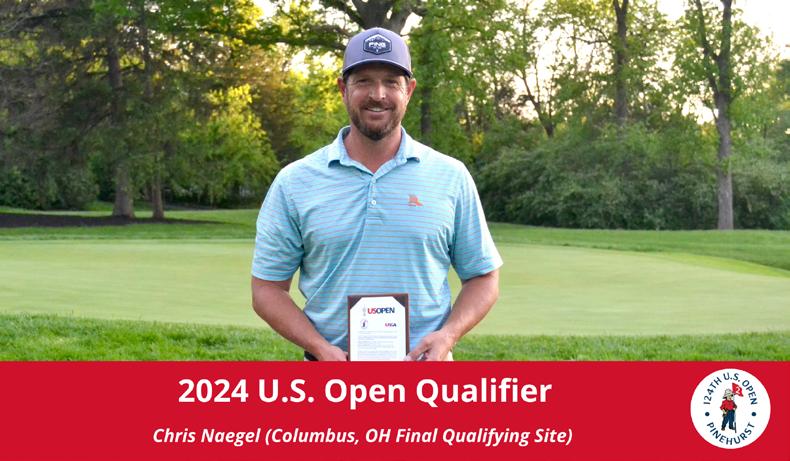
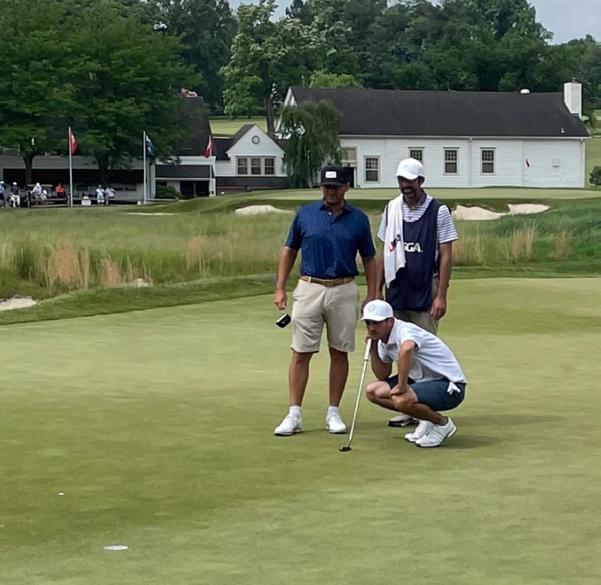
Congratulations to Chris Naegel of Wildwood for making it through Final Qualifying for the U.S. Open!
Chris will compete in his 3rd U.S. Open beginning June 13 at Pinehurst.

The first two Amateur Series Events are in the books! Event #1 took place at WingHaven Country Club on May 6 and Event #2 took place at Persimmon Woods Golf Club on May 28. Event #1 started out rainy, but conditions improved mid-day, while Event #2 had picture perfect weather. We had full fields for both events, which led to two full days of fun for participants. For those that played in Event #2, they received their series participation tee gift - Imperial Headwear - following their round. *The tee gift will be available to other participants that did not play on the 28th at future events.
Players have started earning points to gain entry into the Series Championship. There are still 4 events left to earn those points!
Presented by

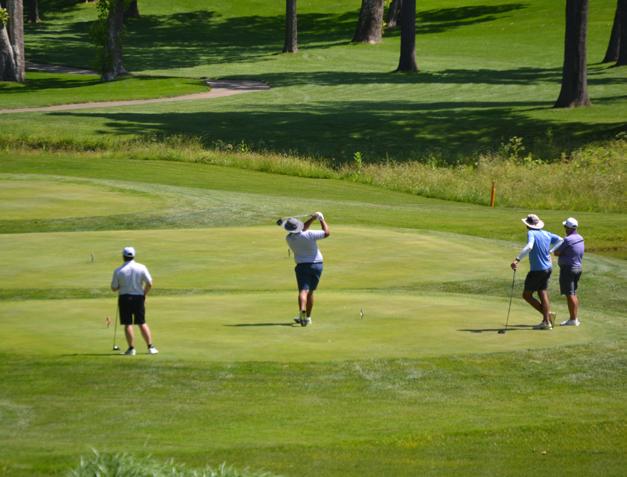
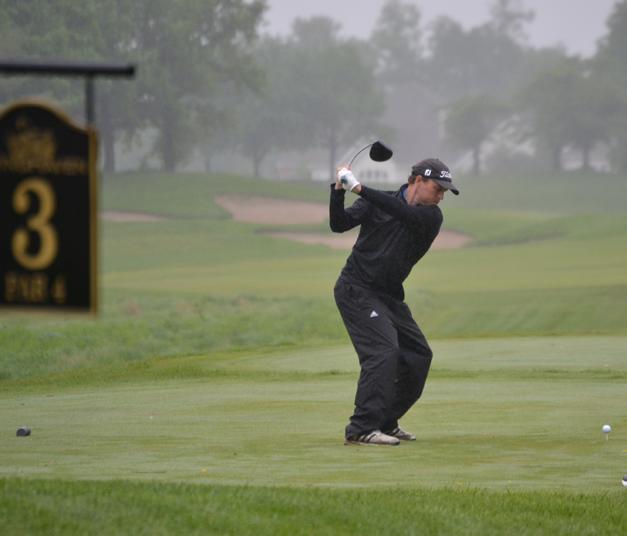
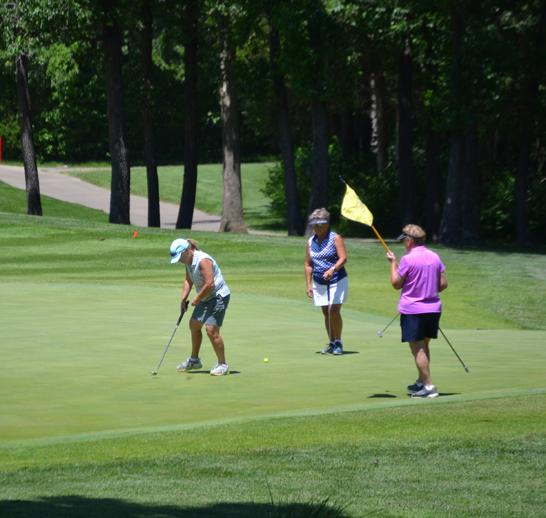

Whichis better, a golf championship that honors par as a rewarding score, or one that celebrates birdies?
The debate has been around almost as long as major championships have been conducted, and it comes to the forefront once again on the heels of a 2024 PGA Championship draped in red. Valhalla Golf Club in Louisville, KY was especially inviting, and when the final birdie was registered, 30-year old Xander Schauffele was the champ with a score of 21 under par. The 72-hole card was the lowest ever signed at a major championship.
But, while 263 was the low score at Valhalla, it hardly was the only low score. The PGA’s 36-hole was 1-under par and 78 players had the stuff to stick around, including two teaching pros. For his part, Schauffele opened the championship with a round of 62, while Shane Lowry narrowly missed a putt for 61.
When the four days were over, the field had a collective minus-214. By contrast, when Brooks Koepka finished 16-under at Bellerive in 2018setting a PGA Championship scoring record of 264 - the field finished 59 strokes over par. So, while Schauffele nipped Koepka by a single stroke, the Boys of Valhalla beat the Bellerive Bunch by a staggering 273 strokes.
So it is that a lot of golf’s scoring records have shallow foundations, because all things are not the same. For instance, if Lowry succeeded in shooting a 61, it certainly would have been an accomplishment, no suggestion otherwise. But how estimable is a 61 on a golf course that is hemorrhaging low scores?
Should a 10-under 61 on soft and supple Valhalla be recognized in the same major championship manner as a 61 under different conditions, on a different golf course, during a different week? Would Schauffele have had
“record shattering” results with the same game at the 1974 U.S. Open at Inverness, or the 1995 U.S. Open at Shinnecock? Hale Irwin won the former at 7-over; Corey Pavin captured the latter at even par.
The tests represented at these different venues hardly can be compared. But along with Schauffele’s 21-under, the scores they produced are listed included in the same major championship catalogue, separate but equal. No asterisks, no qualifiers, no apologies. It makes no sense, while it also makes perfect sense.
Part and parcel to the conversation is the question of which is more desirable - “major championships” like we experienced at Valhalla, with lots of birdies and aggressive play - or majors like those at Inverness or Shinnecock, injected with bogeys and measured play.
The Masters, being the same venue every year, has qualities and values all its own. The British Open, the oldest of the championships, brings links courses and a bump-and-run element to the mix. The U.S. Open and the PGA Championship have the most in common, given both are conducted in the U.S. and both have been hosted on the same courses.
Yet, they are distinctly different in texture. The U.S. Open is both revered and despised as golf’s toughest championship. Its governors hold par in high esteem, protect it with prejudice and challenge every aspect of a player’s game - mental and physical. As former USGA president Sandy Tatum famously stated, “We’re not trying to humiliate the best players in the world, we’re simply trying to identify who they are.”
Since 1994, the average winning score of a U.S. Open has been slightly less than 3-under par. The champion has gone double digits under par only four times, and has finished even or over par nine times. “It takes courage to win the U.S. Open,” said Tom Watson, “more courage than it takes for any other tournament.”
On the other hand, over those same 30 years, the average winning score of the PGA Championship has been slightly better than 11-under and has reached double digits under par 17 times. The PGA doesn’t shy away from fireworks, and if it lights the fuse with its course setup, so be it.
Purists, in many cases, prefer the latter. They want to see talented players tested to the limits. On the other, many might say they enjoy watching the marvelous shots a favorable course can yield. If they want to experience
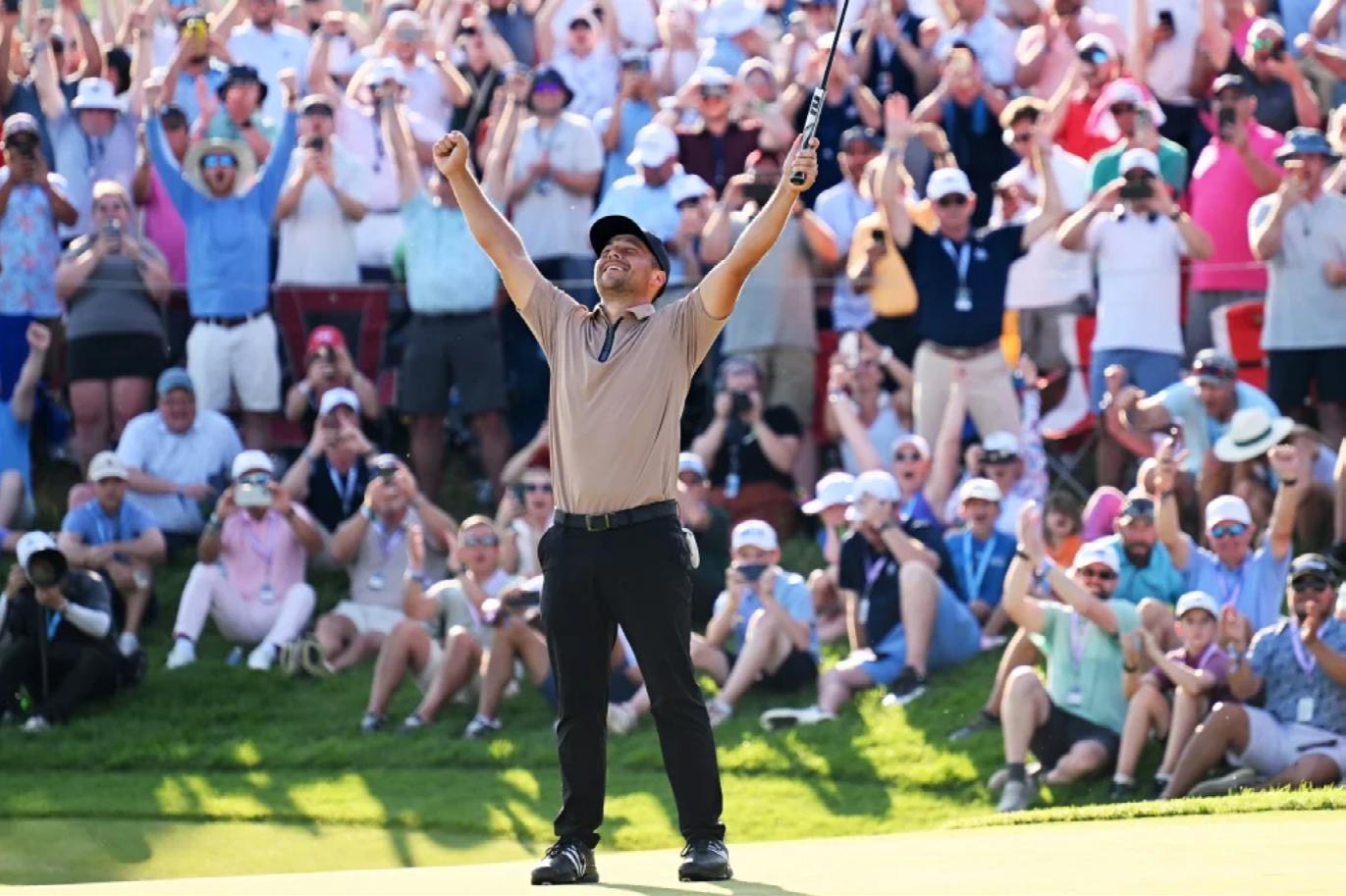
someone struggling to hit fairways or make pars, they can simply reserve a tee time and tee it up themselves.
But perhaps the most important ingredient is the quality of the contest itself. Generally, I prefer the gut-check, grinding personality of the U.S. Open. That championship returns to Pinehurst this month, and who can forget the 1999 edition there? Phill Mickelson and Payne Stewart provided the closing excitement, with Stewart dropping a clutch putt on the 72nd hole to win his first major.
That said, one of the most entertaining finishes in golf history took place at Valhalla in 2000. Perhaps the red-numbered nature of that PGA Championship pulled a journeyman like Bob May into the fray with Tiger Woods, but it didn’t matter. The David-and-Goliath aspect simply added to the drama, as both players shot 5-under 31s on Sunday’s back nine. They traded birdie blows like prize fighters before Woods prevailed in a three-hole playoff.
Stewart’s winning score at Pinehurst was 1-under; the overtime-generating score at Valhalla was 18-under. Was one more legitimate than the other, was one more fun than the other?
You tell me.
> One of the most common swing faults amongst high handicap golfers.
> Swinging over the top results in approaching the ball from the outside to in, due to the overuse and dominance of the upper body through the downswing.
> This swing fault results in a slice if the clubface is open or a pull if the clubface is square or closed.
> Swinging over the top in the golf swing is due to the upper body transitioning first in the downswing instead of the lower body.
> For a proper downswing sequence, it is essential to initiate the lower body first in the transition and have a proper weight shift from your back foot to lead foot.
> The key to a proper weight shift requires several physical factors, including the ability to disassociate the lower body from the upper body, strong core muscles and glute strength, as well as adequate hip mobility.
> If you are struggling with swinging over the top or want to avoid this swing fault, here are a couple simple exercises to help you!

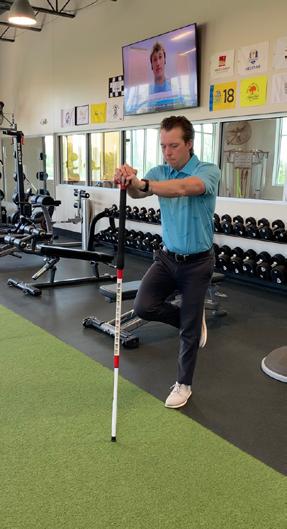
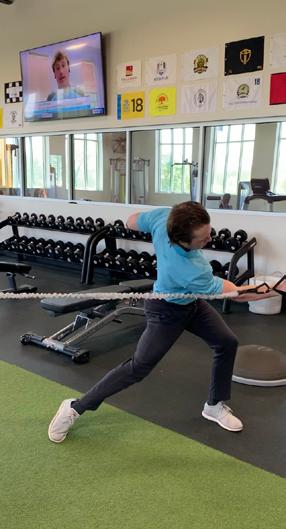
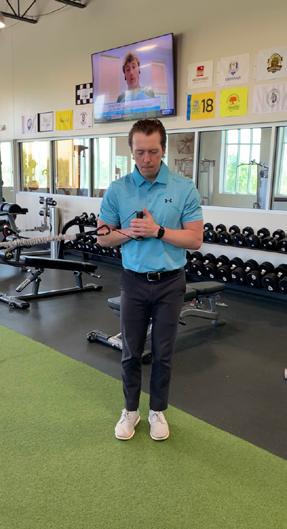









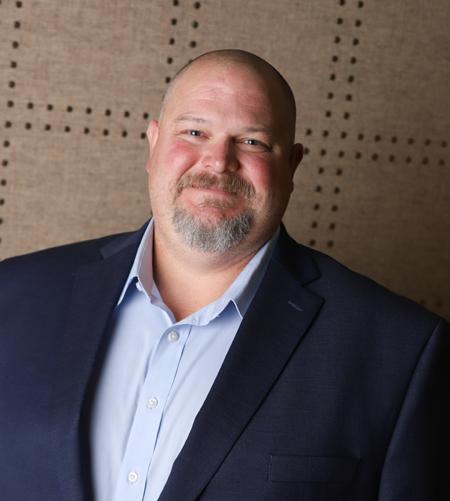
The golf season in St. Louis is well underway but no one bothered to send that message to the Zoysia fairways in the area. I’m sure many people are wondering why the zoysia looks off color, isn’t growing as rapidly as “normal”, or looks weak in high traffic and low-lying areas. Here are a few explanations.
Unlike the cool season greens and roughs that are found on most golf courses in our area, Zoysia is a warm season grass that goes dormant in the winter. Dormancy is a safety mechanism that the plant uses when temperatures drop below a certain temperature. Instead of trying to grow in temperatures that would kill the plant, going dormant allows the plant to hold all its stored energy in the root structure to be used when temperatures become more favorable for zoysia growth again. During dormancy, the existing leaves turn brown and dry. No new leaf tissue will be regenerated until the plant wakes up again in the spring. Additionally, while dormant the plant does not have any defense mechanism against excessive traffic which
helps explain why the golf course may be more restrictive to cart traffic during the winter, even though conditions may seem dry enough to allow traffic.
Last winter was dry and windy, but we have had more rain than normal since mid-April. Some zoysia on mounds and more wide-open areas may have gotten too dry when most golf courses didn’t have any water in their irrigation systems. While desiccation is not typically a major concern for us during an average winter, a drier, windier winter with less than average snow fall and lower temperatures could cause some problems.
On the other end of the spectrum, a lot of places in our area have been getting a lot more rain than average since mid-April. The rain has been helping us correct the overall moisture deficit that we have been experiencing for the last couple of years. While helpful in the long-term, excessive rain without sufficient drying time in between causes poorly drained areas to suffer. Zoysia cannot grow in areas that are too wet.
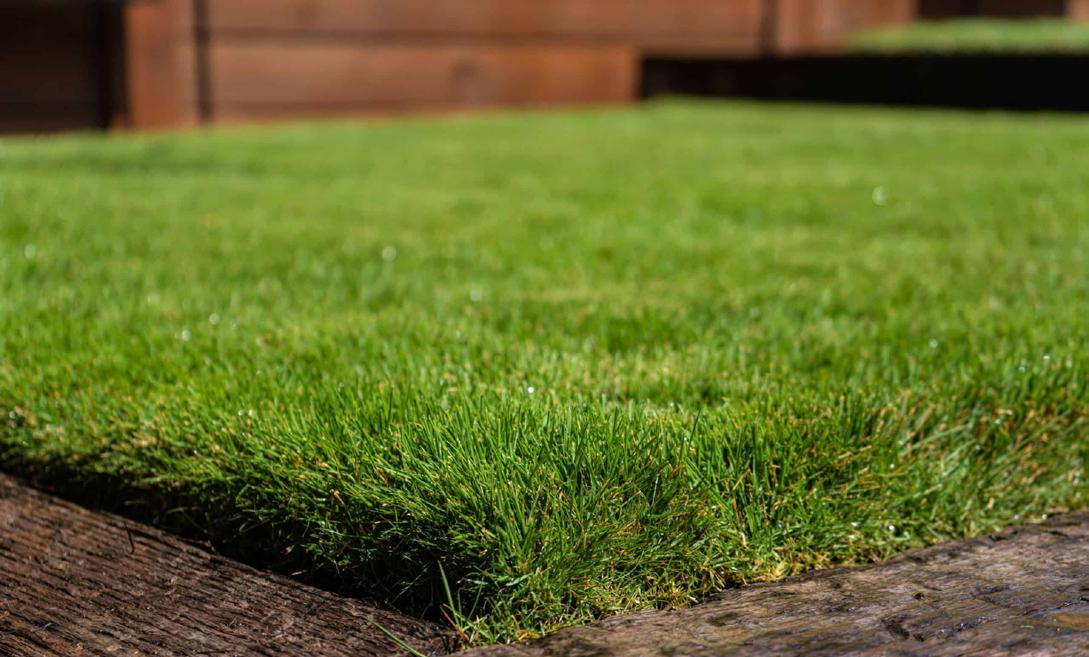
The third piece of the zoysia puzzle is temperature. Exactly opposite to the cool season greens and roughs in our area, zoysia is happiest when temperatures are warmer. I definitely enjoy the cool nights and mornings of late, but these are simply not ideal growing conditions for zoysia. It is safe to say that anytime you feel obligated to put on an extra layer of clothing such as a jacket or vest, the zoysia is also not completely comfortable. Nighttime temperatures in the mid-50’s- low-60’s are not cool enough to cause the plant to go dormant, but these temperatures are also not optimal growing conditions.
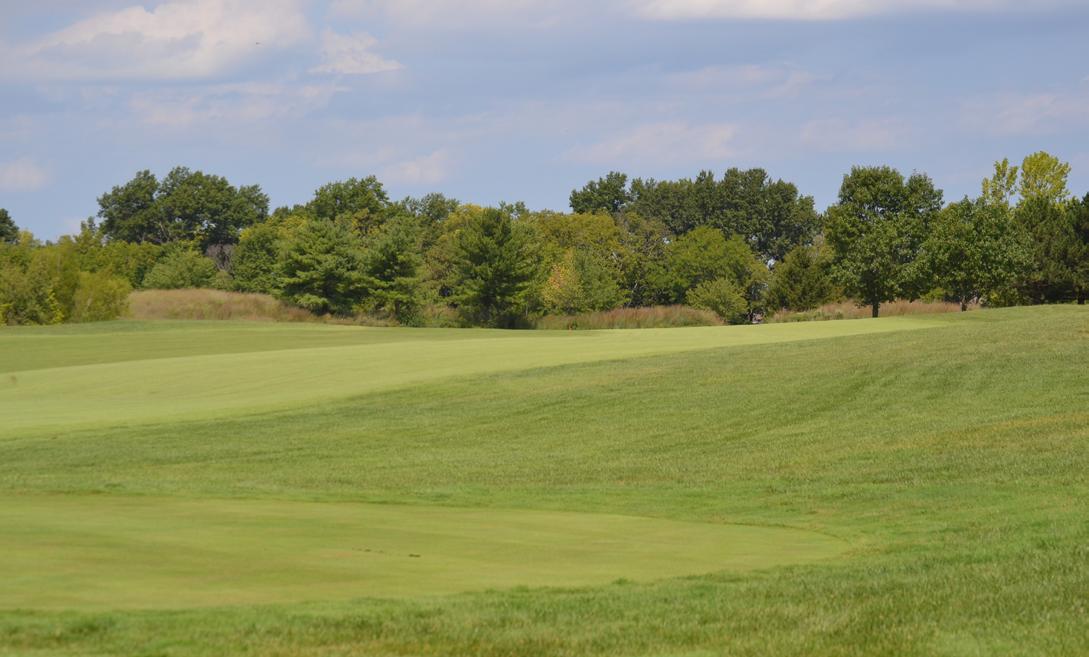
Ironically, the cool nights and mornings are just what the doctor ordered for bentgrass greens! Some turf managers may try applying some additional fertilizer to help push leaf growth, but this can also increase pressure for patch diseases in zoysia that are typically pretty obvious in the spring. Ultimately, we are asking the plant to grow when natural conditions are not favorable for warm season turf to thrive.
Hopefully this helps everyone understand the differences between the different types of turf most courses in the area are growing. I look forward to seeing you on the course, and please remember to FIX YOUR BALL MARKS!
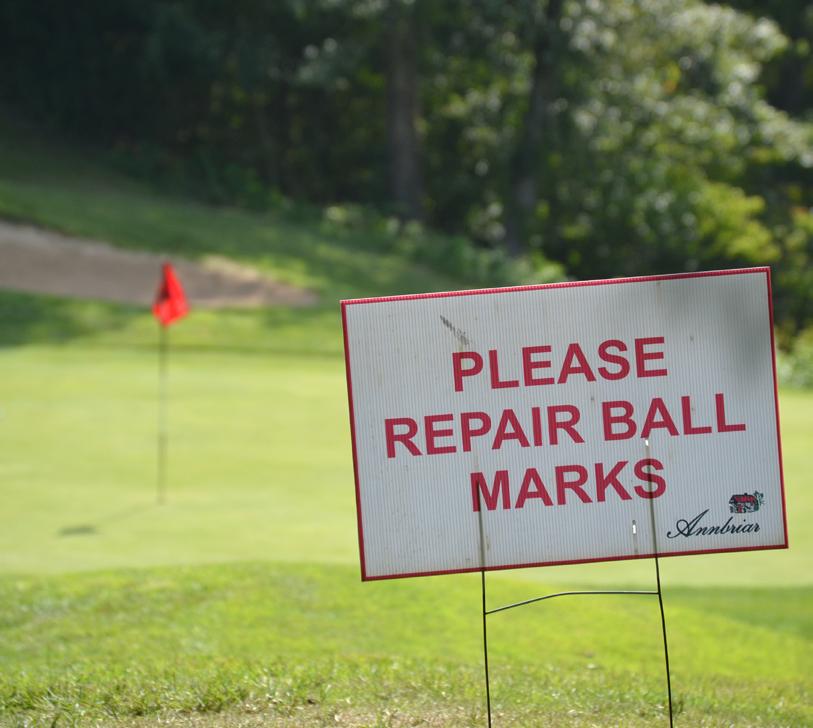
Last year’s PGA Championship led to an interesting situation for PGA Tour up and coming talent, Tom Kim. On the sixth hole at Oak Hill Country Club in Round One, Kim’s tee shot went rogue and into a creek with high weeds. As he approached the area, he decided to do what any hope-filled golfer would do: go into the area to find the ball.
What seemed like a simple task turned into a muddy adventure that landed him in the spotlight. Kim journeyed in completely unsuspecting. He knew there was mud and hoped he would have a nice enough lie to hit the ball out, but he had no idea just how much mud there was. He knew as soon as he took the first step in that he may have made a mistake, but in a Major every stroke counts, so he kept going. Eventually, he realized he was sunk and even tried to enlist the help of his caddie to get him out, who denied the offer.

Dear John: My tee shot was short on the par-3 6th hole yesterday (again!). We saw exactly where it hit the bank and dribbled down toward the lakebed. It’s spring and the lake is low, so I thought there was a good chance of finding and playing it. Alas, when we arrived, there was no sign of the ball. The ball was likely in a bed of dry leaves, grass, brush, and dead reeds inside the penalty area. Can I still search for the ball, or do I have to take penalty area relief?
- AlwaysTheOptimist

Dear AlwaysTheOptimist: You’re fine searching for the ball for up to three minutes. Searching permissions in a penalty area are the same as in the general area (Rule 17.16 first bullet). Reasonable actions are allowed (Rule 7.1a), such as removing loose impediments, spreading grass and reeds apart, stepping on a matted area (to feel the ball under foot), and moving slime in water. Breaking growing and attached natural objects is allowed, but only to the extent necessary to find and identify the ball. There is no penalty for improving conditions affecting the stroke resulting from fairly searching for the ball (Rule 8.1b(1)).
After all of that, Kim returned with no ball and covered in mud from waist down and some on his shirt and arms. Have no fear, the young kid persevered and has kept his spirits high through the whole thing. After that moment, nobody doubted just how bad he wanted it.
Though coming out on the other side, it could have seemed like a drastic measure to get your ball, Tom Kim was within the bounds of finding his ball. A player can do whatever it takeswell, almost whatever - to find their ball, even in a penalty area. Any action to find your ball must be reasonable, which does include going into a penalty area in an attempt to find the ball. Note that you should always proceed with caution when searching as to not make any major alterations to the lie of the ball - or so you don’t end up like Kim.

However, actions beyond what is reasonable are problematic. Likely examples include wholesale flattening of an area, pulling vegetation out of the ground, and unnecessarily breaking growing or attached vegetation (Clarification 7.1a/1). Excessive actions that improve conditions affecting the stroke and that can’t be restored (Rule 8.1c) result in a twostroke penalty in stroke play and loss of hole in match play (Rule 7.1a).
There are no penalties to anyone if the ball is accidentally moved while taking reasonable actions to find or identify it, just replace the ball estimating the spot if necessary (Rule 7.4 and Clarification 7.4/1). When replacing the ball, loose impediments that were moved during the search do not have to be replaced (Clarification 7.4/1). But thereafter (no longer searching, ball replaced), the player must be careful not to move the ball when removing further loose impediments (Rule 15.1b; one-stroke penalty and replace the ball). Note that identifying the ball does not require an announcement to another player, but does require marking before lifting, and the ball must not be cleaned more than necessary for identification (Rule 7.3).
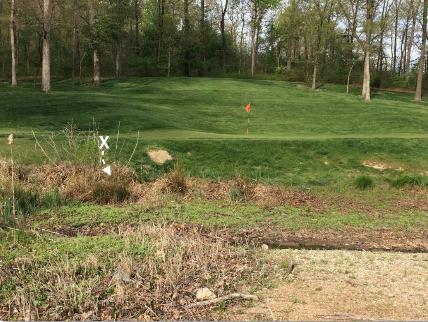
Here are a few side explanations. A growing natural object includes a living bush, reed or grass. Examples of an attached natural object would be a dead, or perhaps dormant, bush, reed or cluster of grass rooted in the ground.


VILLAGE OF PINEHURST, N.C. (May 10, 2024) – The United States Golf Association (USGA) today officially opened Golf House Pinehurst, its seven-acre campus located footsteps from the Pinehurst Resort & Country Club main clubhouse. The new location includes the organization’s equipment-testing and research facility, the visitor-friendly USGA Experience, an outdoor educational landscape feature and the recently relocated World Golf Hall of Fame, as well as administrative offices.
“When I joined the USGA, I shared with our internal teammates that while the USGA will always celebrate history, we’re not going to be afraid to make some. Today is proof positive that we’re just getting started,” said Mike Whan, CEO of the USGA, during the Grand Opening Celebration that took place today. “In four years, we’ve gone from vision to reality, and achieving this important milestone is the action of more than a visitor, but a neighbor. Together, we’re going to do great things for the good of the game that will live on for another 20, 50 years and beyond.”
Following Friday’s ceremony with representatives from the State of North Carolina, Moore County and the Village of Pinehurst and other dignitaries, attendees were given a firsthand look at the campus and attractions, including:
• The USGA Experience, an immersive view of golf and the USGA’s work to unify, showcase, govern and advance the game. Designed by Luci Creative, the Science of Golf and Championship galleries feature interactive multimedia displays that incorporate augmented reality, interactive touch screens, sculptures and trophies;
• The World Golf Hall of Fame, where sports fans can discover and relive the legacies of those who made the game great;
• USGA Golf Museum Special Exhibitions that highlight the USGA’s deep collection of golf artifacts – the most comprehensive collection in the world;
• The USGA’s Research and Test Center, the only one of its kind in North America solely dedicated to testing golf balls and clubs for conformance to the Rules of Golf;
• The Glade, the USGA’s outdoor learning landscape that will help to elevate awareness of the USGA’s ongoing work to help make golf more sustainable, with native plants and pollinator habitats;
• The Grove, a restoration of the ancient longleaf pine forest native to the region, through a unique partnership with North Carolina State University;
• The USGA Shop, where golfers can purchase various products with the USGA championship logo of their choice as well as exhibit-related specialty items.
Golf House Pinehurst was made possible by a comprehensive economic development effort involving representatives from the North Carolina General Assembly, the Office of the Governor, the North Carolina Department of Commerce, Moore County, the Village of Pinehurst and economic development experts. The land on which it is situated was generously provided by Pinehurst Resort & Country Club for a 150-year term.
Independent studies estimate that the total economic impact of the USGA’s long-term presence in Pinehurst, combined with the USGA championships it will bring as a designated anchor site, will exceed $2 billion to the state of North Carolina. The USGA has announced 12 future championships at Pinehurst Resort, including the 2024 U.S. Open (June 13-16) and the return of the back-to-back U.S. Women’s Open and U.S. Open in 2029, previously conducted at Pinehurst in 2014.
USGA staffers based in Pinehurst total 70 full-time employees representing Championship Operations, Equipment Standards, Player Development and Green Section teams, among others. They include some of the game’s foremost scientific and golf management experts. The campus is designed to complement, but not replicate, the association’s headquarters in Liberty Corner, N.J.
The USGA Experience and World Golf Hall of Fame will open to the public at 1 p.m. today, and operate from 10 a.m. ET to 5 p.m. Wednesday through Sunday, with extended hours until 8 p.m. on Thursdays. In honor of the Grand Opening, admission is free through the month of June. For visitor information, click here

The CJ Cup Byron Nelson - Taylor Pendrith
Myrtle Beach Classic - Chris Gotterup
Wells Fargo Championship - Rory McIlroy
PGA Championship - Xander Schauffele
Charles Schwab Challenge - Davis Riley
Advent Health Championship - Harry Higgs
Visit Knoxville Open - Harry Higgs
Volvo China Open - Adrian Otaegui
Soudal Open - Nacho Elvira

Cognizant Founders Cup - Rose Zhang
Mizuho Americas Open - Nelly Korda
Amundi German Masters - Alexandra Fosterling
Jabra Ladies Open - Morgane Metraux
Challenge de España - Joel Moscatel
Danish Golf Challenge - Andreas Halvorsen
KIA Open - Thomas Longbella
Inter Rapidisimo Golf Championship - Harry Hillier
Insperity Invitational - Scott Dunlap
The Tradition - Doug Barron
Senior PGA Championship - Richard Bland
Waterfall City Tournament of Champions - Louis Albertse
Waterfall City Tournament of Champions - David Watts
FBC ZIM Open - Michael Hollick
Kit Kat Cash & Carry Pro-Am - Kieran Vincent
(Golf for the Disabled Tour)
G4D Open - Kipp Popert
Casino Del Sol Golf Classic - Madison Young
Carlisle Arizona Women’s Golf Classic - Ruixin Liu
Copper Rock Championship - Fiano Xu

Marilyn Smith Arizona Women’s Open Senior - Leta Lindley
& Jackie Gallagher-Smith
LPGA Senior Championship - Angela Stanford
Texas Women’s Open Senior - Angela Stanford

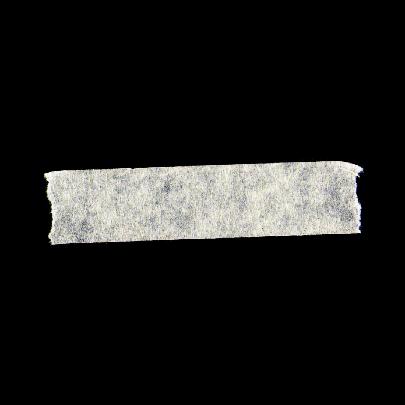
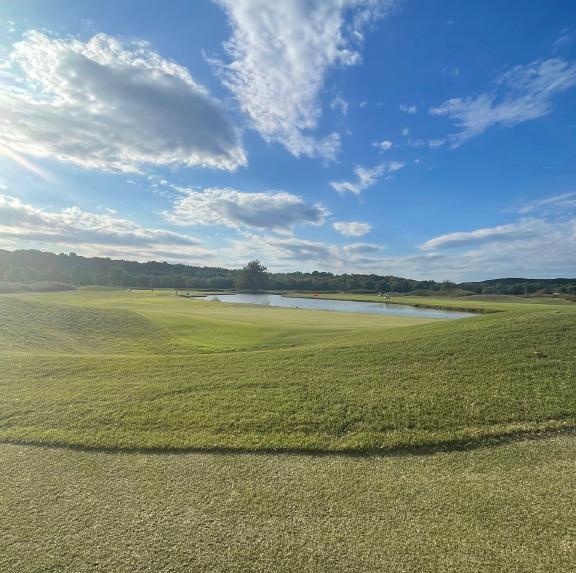



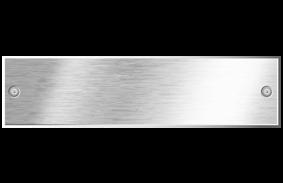











The Metropolitan Golf Foundation owns Normandie Golf Course and is behind the Normandie Reimagined project in conjunction with Beyond Housing. As this project continues forward, we want you to be in the know that is why we encourage you to follow the Metropolitan Golf Foundation on social media. We will be posting updates and information about this venture as much as we can to keep the public in the loop. Use the links below to follow the Foundation across the social media landscape.





Follow Us:
MetroGolfFoundation on Instagram MetropolitanGF on Facebook and X Metropolitan Golf Foundation on LinkedIn
For more information on the Normandie Renovation Project and how you can help, visit https://www.metga.org/nicklaus-and-normandie or contact normandie@metga.org


“The appeal of this project to me was to be involved in an effort that could serve as a catalyst to change needed in our country today, beginning with parts of St. Louis County. Restoring Normandie for a community in need will have a long-lasting positive impact on the lives of youth in St. Louis.” -Jack Nicklaus on his involvement in Normandie Reimagined





